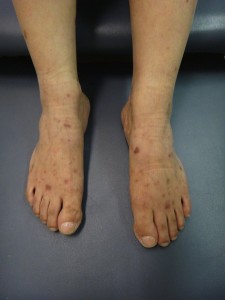New Strategic Research Roadmap for Waldenstrom’s Macroglobulinemia
This section of the website reviews some of the recent cutting edge research into the biology and genetics of WM and where this research may lead us. Fair warning – some of the links included here lead to journal articles which are technical in nature and may be difficult to understand by those without a scientific background. Also, keep in mind that some of this work is still preliminary and that not all of it will come to fruition – that is the nature of research, after all. However, we hope that much of it will result in a better understanding of what makes Waldenstrom’s Macroglobulinemia “tick” and lead to targeted and more personalized treatments. Indeed, we are already beginning to see such results.
New Strategic Research Roadmap for WM
In 2008 the IWMF, the Leukemia & Lymphoma Society (LLS), and the Lymphoma Research Foundation convened a special meeting to identify research priorities in the search for a Treatment for Waldenstrom’s Macroglobulinemia. From that meeting, three major research priorities were developed: the need for a WM tissue bank, the need for better and more representative WM cell lines, and the need for a mouse model of WM. Subsequent projects, funded by the IWMF alone and in concert with the LLS, led to substantial success in these areas.
Because of recent new and exciting developments in the areas of cancer biology and personalized medicine, the IWMF decided in 2014 that the time was right to update its research strategy and enlist the cooperation of many of the major players in the WM research community. To this end, the IWMF partnered with LLS to sponsor a Strategic Research Roadmap Summit in New York City on May 16-17, 2015.
These new targeted pathway treatments are different from traditional therapies in several ways, and these differences have important implications for patients. They are more specific for tumor cells than chemotherapy, which often damages normal cells. Almost all of them are oral medications administered daily or several times a week, which means that they can be taken at home. This makes them more convenient, but it also means that patients must be compliant about when and how to take their medication. These treatments do not damage stem cells in the bone marrow, although they all have side effects that may lead patients to discontinue their use. They can result in dramatic improvements in disease status, but they appear to slow or arrest tumor cell growth rather than completely eliminate the cancer. This means that, once patients begin these treatments, they may need to continue until the treatments no longer work or until side effects become intolerable. This represents a significant change from the older therapies which are typically administered cyclically for a period of time and then discontinued after a patient achieves a response. Because cancer cells are very adept at developing resistance mechanisms, it is highly likely that combinations of targeted pathway therapies will be necessary, or that targeted pathway therapies will be combined with monoclonal antibodies, such as Rituxan.
Resource Link: https://www.iwmf.com/about-wm/future-directions

